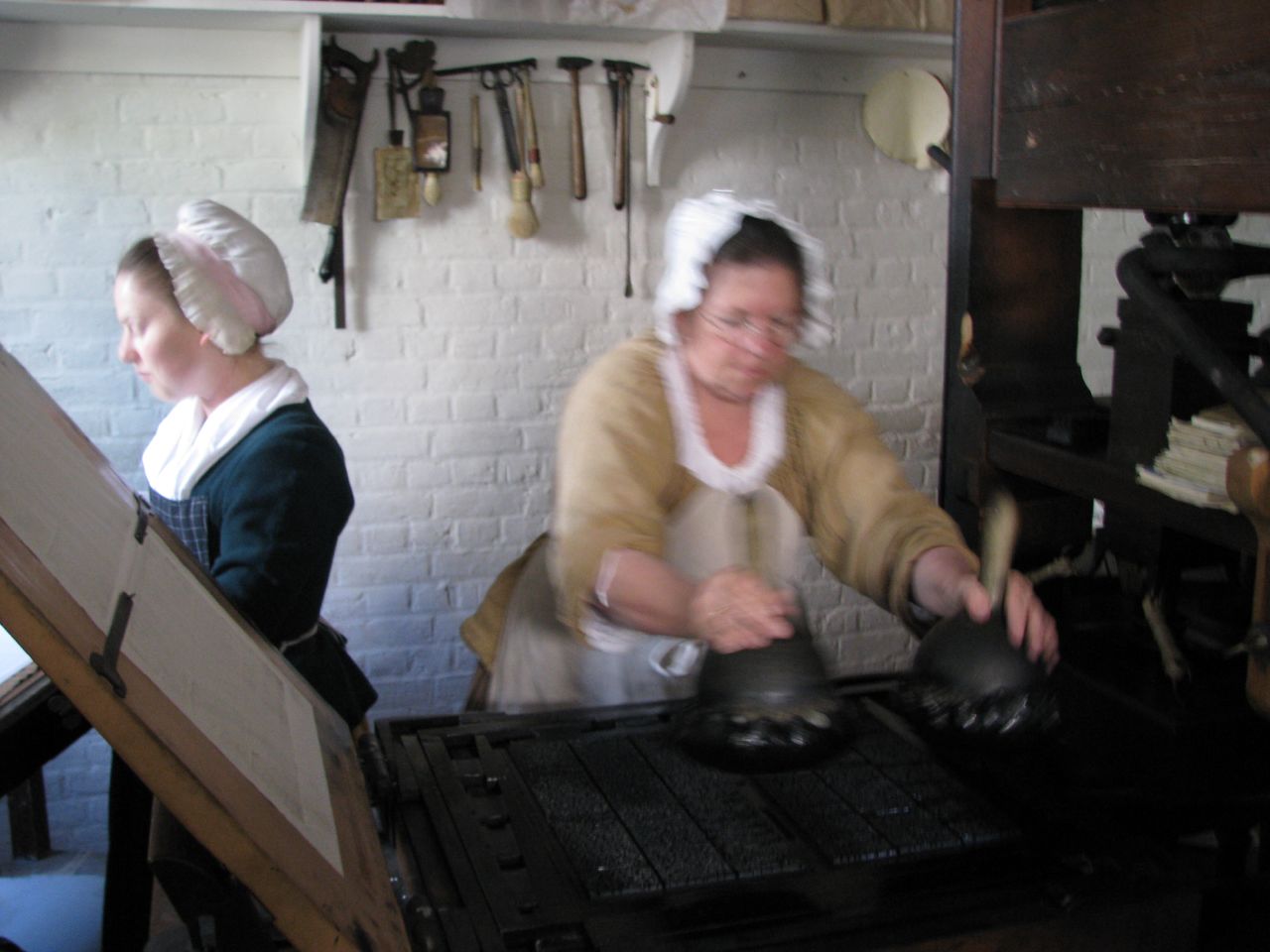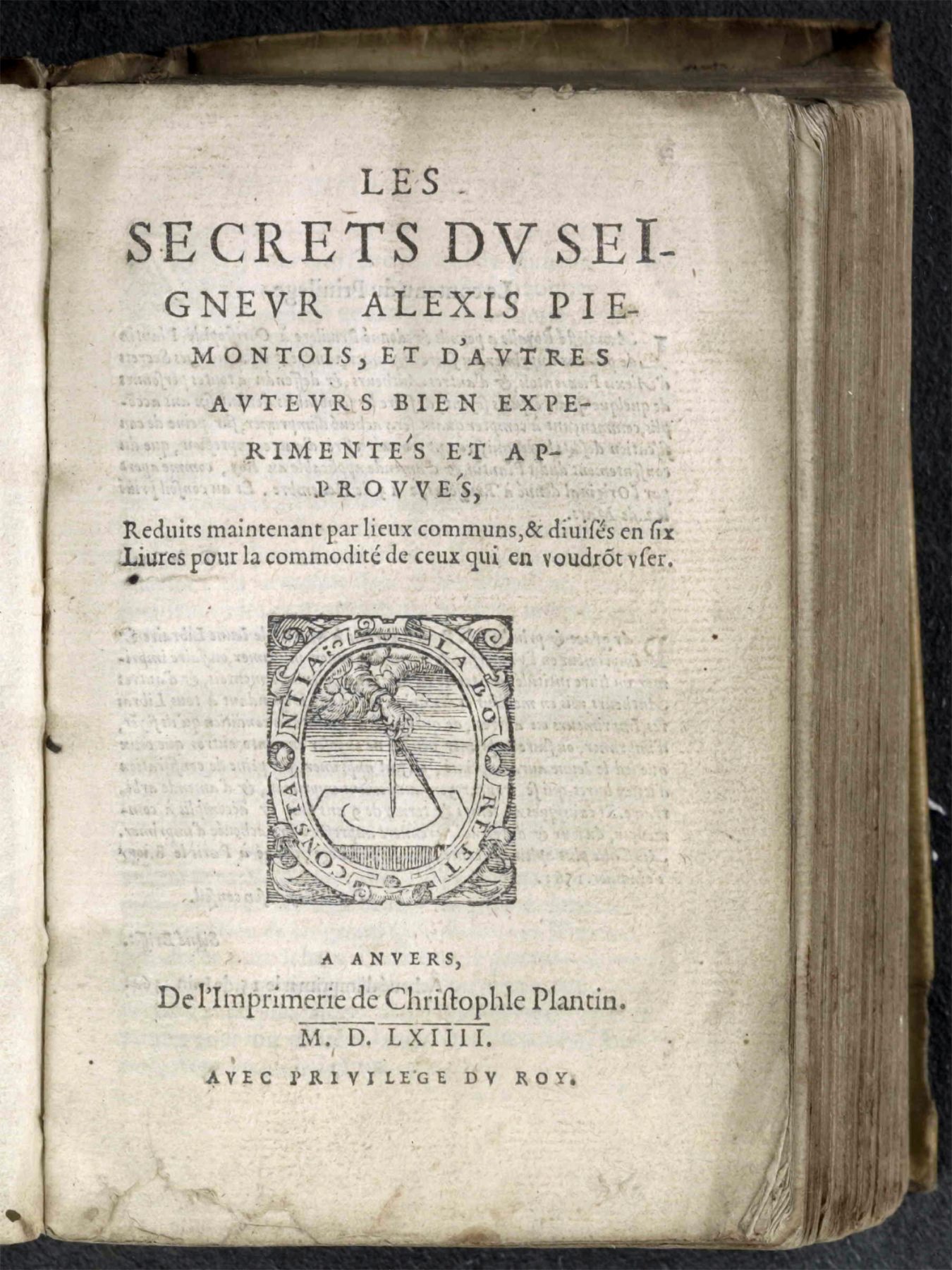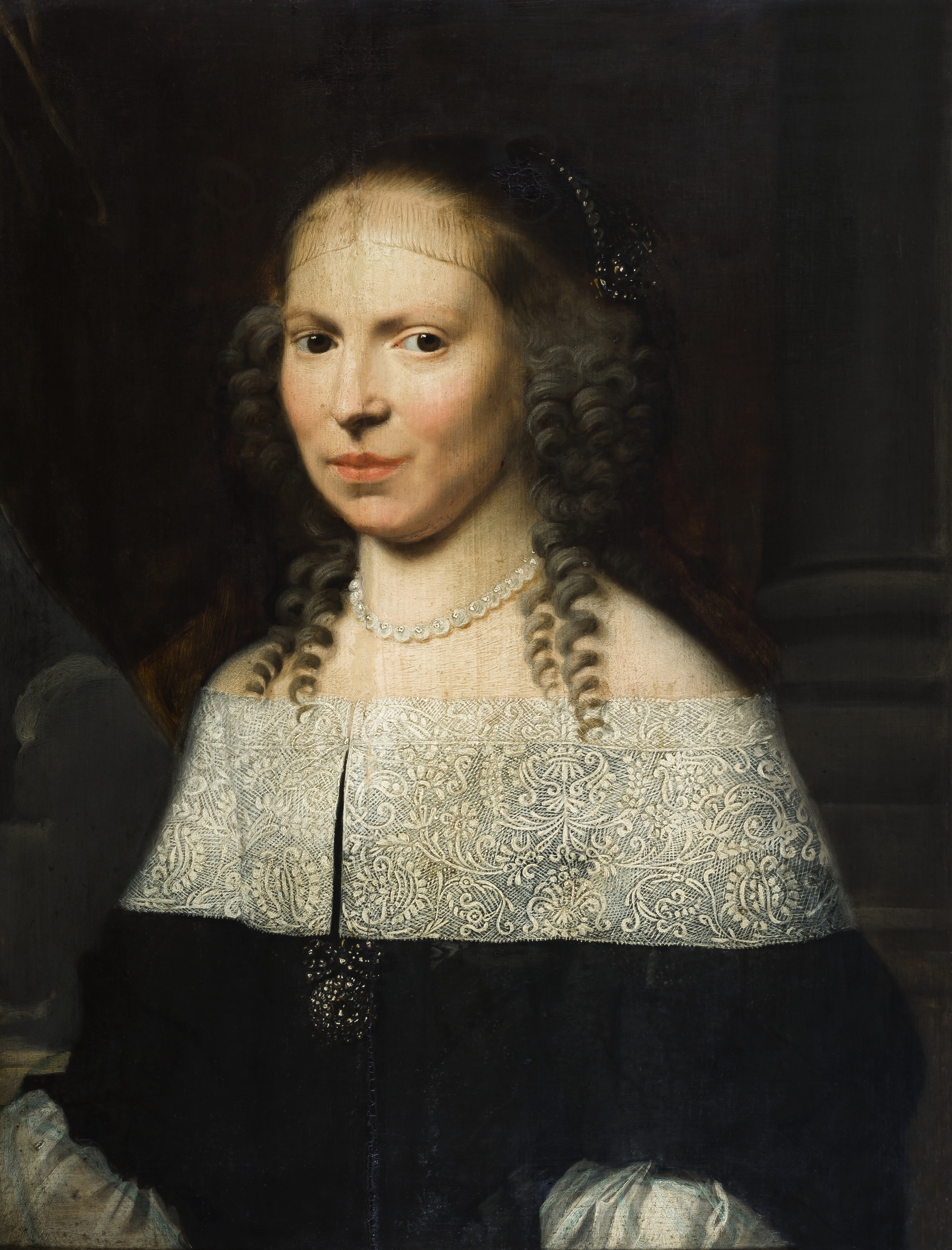|
Maria Theresia Borrekens
Maria Theresia Borrekens (1728–1797), was a printer and manager of ''Officina Plantiniana'' (also known as Plantin Press), a leading publisher in Antwerp, from 1765 to 1797. Biography Maria Theresia Josepha BorrekensJan Baptist van der Straelen, ''Geslagt-lyste der nakomelingen van der vermaerden Christoffel Plantin'', Janssens, 1858, pp. 55-56 was born on 27 July 1728 as the daughter of Engelbert Maria Josef Borrekens (ca. 1693–26 December 1748), a knight, and Maria Catherina Wellens (1705–1787). She was the second of eight children. On 11 November 1750, she married Franciscus Joannes Moretus, whose parents were Theresia Mechtildis Schilders and Joannes Jacobus. Moretus studied philosophy at the University of Douai. In 1742, he acquired his law degree at the Old University of Leuven. He inherited the Officina Plantiniana, the leading Antwerp publishing house, on the death of his father. Her husband was the head of the printing business beginning in 1757. Most ... [...More Info...] [...Related Items...] OR: [Wikipedia] [Google] [Baidu] |
Anna Maria De Neuf
Anna Maria de Neuf (1654–1714), was a printer and manager of the Plantin Press in Antwerp, a leading publisher in Antwerp, from 1696 to 1714. Life Anna Maria de Neuf was born in Antwerp where she was baptized in the Cathedral on 9 September 1654. She was the daughter of Simon, lord of Hooghelande, and lady Anna Steymans.Jan Baptist van der Straelen, ''Geslagt-lyste der nakomelingen van der vermaerden Christoffel Plantin'', Janssens, 1858, pp. 40-41 Her family was titled and wealthy. She married Balthasar III Moretus in July 1673, with wedding celebrations occurring from the 9th through the 11th of July, provided by his father Balthasar II Moretus and Anna's father, Simon. Balthasar was the head of ''Officina Plantiniana'' (also known as Plantin Press) starting in 1674, when he partnered with his mother in running the firm. Her husband died the following year. Balthasar II died in 1674 after which his mother Anna Goos provided leadership and training to, and worked in par ... [...More Info...] [...Related Items...] OR: [Wikipedia] [Google] [Baidu] |
18th-century Businesswomen
The 18th century lasted from January 1, 1701 ( MDCCI) to December 31, 1800 ( MDCCC). During the 18th century, elements of Enlightenment thinking culminated in the American, French, and Haitian Revolutions. During the century, slave trading and human trafficking expanded across the shores of the Atlantic, while declining in Russia, China, and Korea. Revolutions began to challenge the legitimacy of monarchical and aristocratic power structures, including the structures and beliefs that supported slavery. The Industrial Revolution began during mid-century, leading to radical changes in human society and the environment. Western historians have occasionally defined the 18th century otherwise for the purposes of their work. For example, the "short" 18th century may be defined as 1715–1789, denoting the period of time between the death of Louis XIV, Louis XIV of France and the start of the French Revolution, with an emphasis on directly interconnected events. To historians who ... [...More Info...] [...Related Items...] OR: [Wikipedia] [Google] [Baidu] |
Book Publishers (people) Of The Austrian Netherlands
A book is a medium for recording information in the form of writing or images, typically composed of many page (paper), pages (made of papyrus, parchment, vellum, or paper) bookbinding, bound together and protected by a book cover, cover. The technical term for this physical arrangement is ''codex'' (plural, ''codices''). In the history of hand-held physical supports for extended written compositions or records, the codex replaces its predecessor, the scroll. A single sheet in a codex is a Recto, leaf and each side of a leaf is a page (paper), page. As an intellectual object, a book is prototypically a composition of such great length that it takes a considerable investment of time to compose and still considered as an investment of time to read. In a restricted sense, a book is a self-sufficient section or part of a longer composition, a usage reflecting that, in antiquity, long works had to be written on several scrolls and each scroll had to be identified by the book it co ... [...More Info...] [...Related Items...] OR: [Wikipedia] [Google] [Baidu] |
Flemish Printers
Flemish (''Vlaams'') is a Low Franconian dialect cluster of the Dutch language. It is sometimes referred to as Flemish Dutch (), Belgian Dutch ( ), or Southern Dutch (). Flemish is native to Flanders, a historical region in northern Belgium; it is spoken by Flemings, the dominant ethnic group of the region. Outside of Flanders, it is also spoken to some extent in French Flanders and the Dutch Zeelandic Flanders. Terminology The term ''Flemish'' itself has become ambiguous. Nowadays, it is used in at least five ways, depending on the context. These include: # An indication of Dutch written and spoken in Flanders including the Dutch standard language as well as the non-standardized dialects, including intermediate forms between vernacular dialects and the standard. Some linguists avoid the term ''Flemish'' in this context and prefer the designation ''Belgian-Dutch'' or ''South-Dutch'' # A synonym for the so-called intermediate language in Flanders region, the # An indicatio ... [...More Info...] [...Related Items...] OR: [Wikipedia] [Google] [Baidu] |
18th-century Printers
The 18th century lasted from January 1, 1701 ( MDCCI) to December 31, 1800 ( MDCCC). During the 18th century, elements of Enlightenment thinking culminated in the American, French, and Haitian Revolutions. During the century, slave trading and human trafficking expanded across the shores of the Atlantic, while declining in Russia, China, and Korea. Revolutions began to challenge the legitimacy of monarchical and aristocratic power structures, including the structures and beliefs that supported slavery. The Industrial Revolution began during mid-century, leading to radical changes in human society and the environment. Western historians have occasionally defined the 18th century otherwise for the purposes of their work. For example, the "short" 18th century may be defined as 1715–1789, denoting the period of time between the death of Louis XIV of France and the start of the French Revolution, with an emphasis on directly interconnected events. To historians who expan ... [...More Info...] [...Related Items...] OR: [Wikipedia] [Google] [Baidu] |
1797 Deaths
Events January–March * January 3 – The Treaty of Tripoli, a peace treaty between the United States and Ottoman Tripolitania, is signed at Algiers (''see also'' 1796). * January 7 – The parliament of the Cisalpine Republic adopts the Italian green-white-red tricolour as the official flag (this is considered the birth of the flag of Italy). * January 13 – Action of 13 January 1797, part of the War of the First Coalition: Two British Royal Navy frigates, HMS ''Indefatigable'' and HMS ''Amazon'', drive the French 74-gun ship of the line '' Droits de l'Homme'' aground on the coast of Brittany, with over 900 deaths. * January 14 – War of the First Coalition – Battle of Rivoli: French forces under General Napoleon Bonaparte defeat an Austrian army of 28,000 men, under ''Feldzeugmeister'' József Alvinczi, near Rivoli (modern-day Italy), ending Austria's fourth and final attempt to relieve the fortress city of Mantua. * January 26 & ... [...More Info...] [...Related Items...] OR: [Wikipedia] [Google] [Baidu] |
1728 Births
Seventeen or 17 may refer to: *17 (number), the natural number following 16 and preceding 18 * one of the years 17 BC, AD 17, 1917, 2017 Literature Magazines * ''Seventeen'' (American magazine), an American magazine * ''Seventeen'' (Japanese magazine), a Japanese magazine Novels * ''Seventeen'' (Tarkington novel), a 1916 novel by Booth Tarkington *''Seventeen'' (''Sebuntiin''), a 1961 novel by Kenzaburō Ōe * ''Seventeen'' (Serafin novel), a 2004 novel by Shan Serafin Stage and screen Film * ''Seventeen'' (1916 film), an American silent comedy film *''Number Seventeen'', a 1932 film directed by Alfred Hitchcock * ''Seventeen'' (1940 film), an American comedy film *''Eric Soya's '17''' (Danish: ''Sytten''), a 1965 Danish comedy film * ''Seventeen'' (1985 film), a documentary film * ''17 Again'' (film), a 2009 film whose working title was ''17'' * ''Seventeen'' (2019 film), a Spanish drama film Television * ''Seventeen'' (TV drama), a 1994 UK dramatic short starring Christi ... [...More Info...] [...Related Items...] OR: [Wikipedia] [Google] [Baidu] |
List Of Women Printers And Publishers Before 1800
The list of women printers and publishers before 1800 include women active as printers or publishers prior to the 19th century. Before the printing press was invented, books were made from pages written by scribes, and it could take up to a year or two for a book to be completed. Books were a luxury mainly for religious scholars and the upper class. Johannes Guttenberg invented the printing press around 1450, which allowed for mass production of books. Having books become more widely available meant that the masses had access to information that they might not get otherwise, but threatened the authority of the state. Some printers had their works censored and may have been jailed for disseminating information of which the state did not approve. Printing required setting type, which could be arduous, and running the press, which was heavy, as well as bookbinding. Although running the press was considered too physically difficult, many women were able to do all the jobs required t ... [...More Info...] [...Related Items...] OR: [Wikipedia] [Google] [Baidu] |
Jacob Paul Moretus
Christophe Plantin ( nl, Christoffel Plantijn; – 1 July 1589) was a French Renaissance humanist and book printer and publisher who resided and worked in Antwerp. Life Plantin was born in France, probably in Saint-Avertin, near the city of Tours, Touraine. He was not born to a wealthy family, and his mother died when Plantin was still quite young. As a youth he apprenticed as a bookbinder in Caen, Normandy, and also married there. In 1545, he and his wife, Joanna Rivière, set up shop in Paris, but after three years they chose to relocate to the booming commercial center of Antwerp, where Plantin became a free citizen and a member of the Guild of St Luke, the guild responsible for painters, sculptors, engravers and printers. The quality of his work as a bookbinder brought him into contact with nobility and wealth. By 1549, he headed one of the most well-respected publishing houses in Europe. He was responsible for printing a wide range of titles, from Cicero to religio ... [...More Info...] [...Related Items...] OR: [Wikipedia] [Google] [Baidu] |
Anna Goos
Anna Goos (1627–1691), was a printer and co-manager of ''Officina Plantiniana'' (now called Plantin Press) in Antwerp from 1674 to 1681. She prepared her son, Balthasar II Moretus, to run the business, during political and financially turbulent times, such as during the Franco-Dutch War (1672–1678) and the financial collapse in Spain that affected their largest client, the Hieronymite Fathers of San Lorenzo in Royal Site of San Lorenzo de El Escorial. Her leadership helped prevent the business from closing down during these times. Biography Goos was raised in an aristocratic family. She married Balthasar II Moretus when she was eighteen and he was thirty. Balthasar was the son of Jan II Moretus and Maria De Sweert (1588 - 1655) and the grandson of Jan Moretus and Martina Plantin. Like those before him, Balthasar continued to publish liturgical books. Although he endeavored to also publish literary and historical books, by the end of his career nearly all of the books tha ... [...More Info...] [...Related Items...] OR: [Wikipedia] [Google] [Baidu] |
Plantin Press
The Plantin Press at Antwerp was one of the focal centers of the fine printed book in the 16th century. History Christophe Plantin (c. 1520–1589) of Touraine was trained as a bookbinder. He fled from Paris where at least one printer had recently been burned at the stake for heresy, and went to Antwerp. There he bound books, became a citizen, and by 1555 began to print books, at first for distribution by other publishers. The city was already an established center of printing woodcuts, engravings and books. Plantin took on an assistant, Jan Moretus (Moerentorf), who read Latin and Greek and could write correspondence in several modern languages. He became Plantin's business manager, son-in-law and eventually his successor in the Plantin printing press. For over two hundred years the Plantin press had a monopoly, granted by the papacy, for the printing of liturgical formularies, including in Spain. In 1562, suspected of heresy, Plantin fled to France for two years. At an auction ... [...More Info...] [...Related Items...] OR: [Wikipedia] [Google] [Baidu] |





